The Digital Product Passport is an advanced tool that can monitor the life cycle of a product, from its manufacturing to disposal. Imagine a digital ID that contains details of the components or raw materials used, place of manufacture and even reuse of a product.
This article will provide you with digital product passport’s (DPPs) huge potential for a sustainable future, and the European Union regulations that are pushing the use of DPPs. It will also show real-life examples from different industries and highlight the technological advances like Blockchain and AI that are helping DPP grow. Find out about the multiple benefits DPPs provide, such as how they can help customers on product’s transparency and regulatory bodies make better decisions. Also, learn how brands are paving the way for a more sustainable and open future with digital product platform that encourages circularity in the global economy.
A Digital Product Passport: What is it?
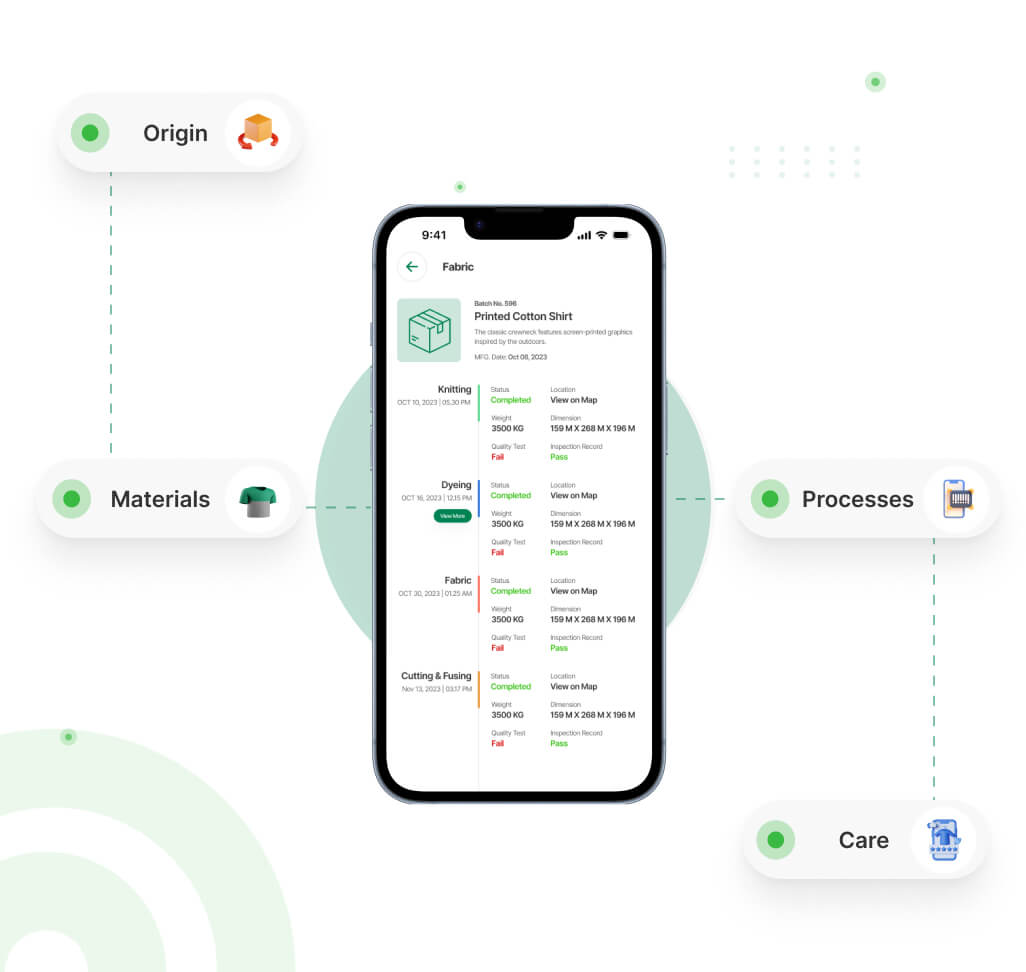
A digital product passport is similar to a product's digital biography. It is a collection that follows a product from beginning to end, containing information about the raw materials used, the manufacturing process and the product's environmental impacts. The ability of a DPP is comparable to having a smartphone that tells you where its materials originate from, certification for compliance and regulations, how to properly recycle them and everything in between. Manufacturers, Retailers and other investors are encouraged to help and create a more environmental future in which businesses can use and foster sustainability initiatives and enable customers to make educated decisions.
Why Are Digital Product Passports Becoming Increasingly Popular?
The concepts of sustainability and the circular economy are helping to make the digital product passport more and more popular. The circular economy strives to reduce waste and prolong the life of resources and goods by changing the way of recycling and reuse. As part of this bigger commitment, this makes our environment more sustainable by helping producers and consumers to make the best use and recycling of valuable resources and materials. In terms of sustainability, it makes supply chains more transparent and accountable assisting customers and companies in making decisions that will benefit the environment.
How EU Legislation Facilitates Digital Product Passports?
The EU digital product passport fosters a big move toward a circular economy and the DPP is a vital tool in achieving this. The initiative is still growing, but it has the potential to transform the way items are developed, used and recycled throughout Europe. Several main legislative and regulatory frameworks in the European Union support the use of digital product passports. These frameworks attempt to improve sustainability create a circular economy and assure transparency and traceability across product life cycles.
Here are Some of the Important Laws and Regulations Related to DPPs:

1. The European Green Deal
The European Green Deal is a set of initiatives developed by the European Commission to make Europe carbon neutral by 2050. This strategy aspires to build a sustainable economy with zero net emissions of greenhouse gasses. It aims to make the European Union a global leader in the circular economy. As this law offers complete information on the environmental effects of products, DPPs are viewed as a vital tool to meet the objectives of the green deal.
2. Circular Economy Action Plan (CEAP)
By 2030, this initiative wants to minimize waste creation in the EU by 50%. To raise the total recycling rate the CEAP increases material reuse and recycling. The strategy encourages creating and using greener goods and services by integrating circular economy ideas. The CEAP highlights the importance of DPPs in enabling a circular economy by guaranteeing that goods are built throughout their entire life cycle.
3. Sustainable Products Initiative (SPI)
The SPI is a European Commission initiative that aims to improve product sustainability. It centers around extending product life expectancies and expanding recyclability. The SPI relies heavily on DPPs, which provide the necessary data to support these sustainability objectives.
4. Ecodesign for Sustainable Products Regulation (ESPR)
The Ecodesign for Sustainable Products Regulation sets out to expand the scope of the Ecodesign Directive to encompass a greater number of energy-related products. Under the ESPR, products must fulfill particular sustainability standards and DPPs will play a critical role in documenting and certifying compliance.
5. Corporate Sustainability Reporting Directive (CSRD)
CSRD mandates large companies to present detailed reports on sustainability and its effect on society and the environment. By providing transparent and uniform information on product lifecycles and sustainability metrics DPPs will facilitate compliance with the CSRD.
What is an Example of a Digital Product Passport?
Transgenie has helped many clients to create a digital product passport or DPP. An example of a Digital product passport and how product information can be structured can be found below:
Digital Product Passport Example: Men’s T-shirt
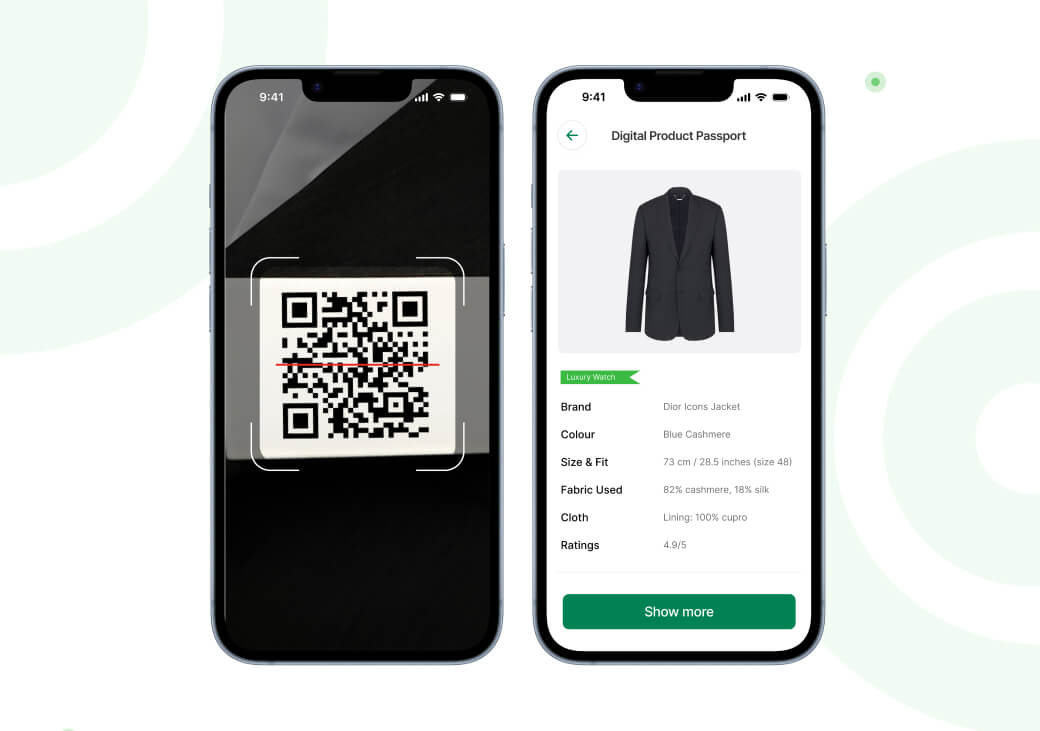
A men's t-shirt in the fashion sector is one example of a digital product passport; you can quickly get a detailed profile of the t-shirt. This contains comprehensive details regarding the fabric's composition and makes it clear that the cotton is conventional, recycled or organic, as well as the environmental impacts of its fabrication.
Additionally, by scanning the QR code, customers may learn about the t-shirt's journey from raw materials to the final product, emphasizing steps like dyeing as well as their ecological effects and the best options for recycling or disposing of clothes to encourage a more circular approach to clothing consumption.
This level of detail is given by Transgenie which leverages DPP so that you can access your product's full information, which is transparently given in the Digital Product Passport (DPP). This makes sure that everything about your product is easily accessible, from its beginnings to its present state. Transgenie offers a smooth and comprehensive perspective that lets you monitor the lifespan of the product, confirm its legitimacy and make informed decisions.
What Kind of Information is Shown in the Digital Product Passport?
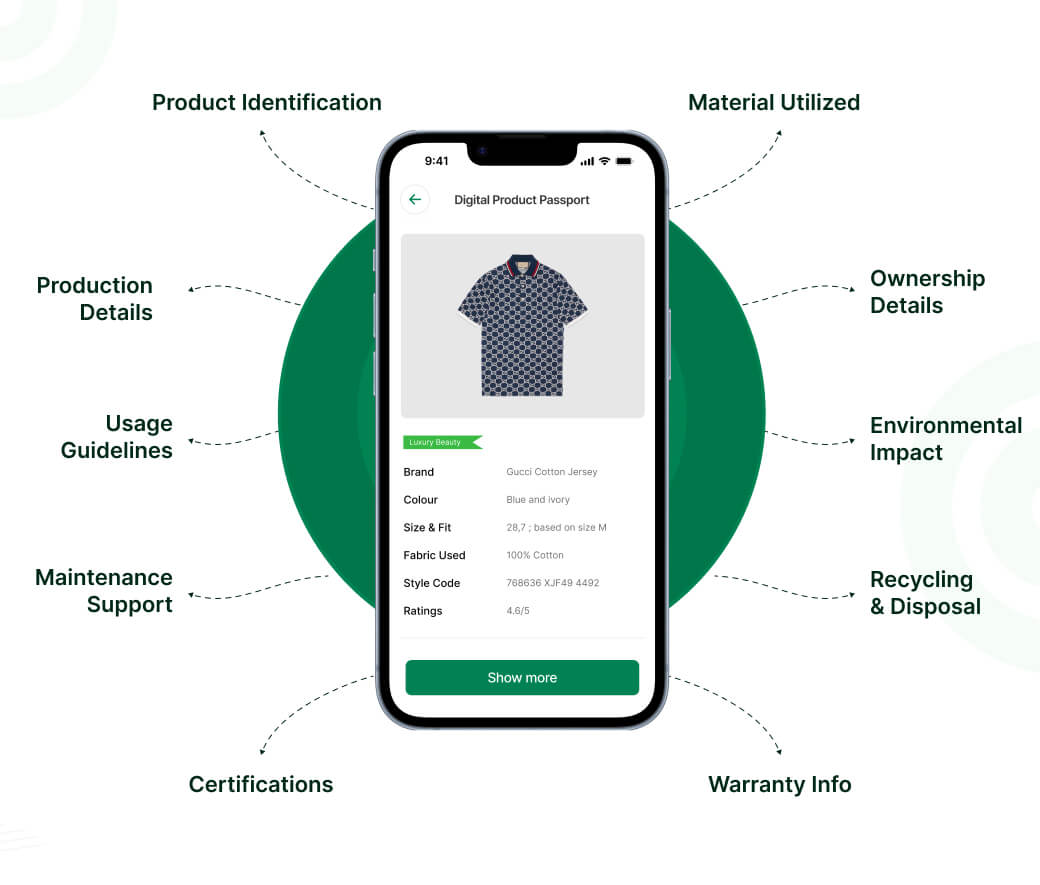
An outline of the main components of a digital product passport may be found below:
Product identification
This includes the name of the product, approach, manufacturer, batch/serial number and other basic product information.
Material utilized
A detailed list of all the parts and raw materials utilized in the product, along with their sources.
Production and traceability details
Information regarding how the product is made including factory locations and the route taken by the supply chain from the initial source to the final customer.
Ownership details
The record of all former and present owners makes it possible for any future purchaser to confirm the item's authenticity and history.
Environmental impact
Details about the product's sustainability, carbon footprint and other environmental effects for its whole life cycle from manufacture to disposal.
Certifications and compliance information
DPP offers certifications like ISO 14001, EUDR & OEKO-Tex Standard 100 that ensure thorough coverage of several facets of product quality, sustainability & more.
Usage Guidelines
The DPP comes with user guides that provide detailed instructions on how to operate devices safely and correctly.
Maintenance support
Details about how to clean the product and who to contact for help, among other things.
Recycling and disposal
Instructions on how to properly recycle or dispose of the product at the end of its useful life including details on recyclable components.
Warranty and service information
Information regarding servicing locations, warranty durations and customer support contact details.
These bits of information allow businesses to show transparency and regulatory compliance while also assisting customers in making better-informed decisions. For example, the DPP of a jacket may provide information used in the manufacture and tips on prolonging its lifespan.
Industry Adoption with Real world Examples
Fashion and Textiles - H&M textile
H and M launched Digital Product Passports (DPP) to increase supply chain transparency, sustainability and traceability in the textile industry. Each product is tagged with a QR code that provides information on the materials used, production processes and ideas for recycling or reuse
Luxury goods - LVMH
At LVMH, products come with a digital passport that contains accurate data about their origin, workmanship and ownership history, increasing the authenticity and traceability of luxury brands like Louis Vuitton and Bulgari.
In the Aura Blockchain Consortium, consumers may access information such as material origin, environmental effects and other details via a private blockchain ledger.
Food and Beverages - IBM food trust with Walmart
Walmart partnered with IBM to implement blockchain-based DPPs for tracing the origin and journey of food products. Products are tracked from farm to shelf using the blockchain.
Agriculture & Farming - Nespresso
The use of digital product passports by Nespresso to offer comprehensive details on their coffee goods is an advanced approach. Information on the origins of coffee beans, the production method and sustainability measures are all included in these passports and about recycling and the effects of their coffee pods.
Batteries - Northvolt
Currently, one of the most active companies in the implementation of digital battery passports is the European battery company Northvolt. They want to make sure that by 2027 all batteries must be aligned with the EU Battery Regulation, which calls for digital passports. This facilitates monitoring carbon emissions and guarantees resources are sourced ethically.
Construction - Cemex
Cemex, a global building materials company wants to improve the traceability and sustainability of its products so it implemented DPP. This strengthens the circular economy initiatives, allowing them to provide comprehensive information about the lifecycle of their cement and concrete products.
Health and pharmaceuticals - Johnson and Johnson
Digital product passports are being used by Johnson & Johnson to improve the transparency and traceability of their medical supplies. To comply with regulatory requirements this company lets them track the complete lifespan of their products.
Technological Advancements using Digital Product Passport
Blockchain
Blockchain creates a secure and immutable record of a product's lifecycle. Each transaction involving a products data is securely stored on the blockchain. Blockchain integration in DPPs can significantly minimize the risk of fraud and counterfeiting giving manufacturers and merchants confidence in the product's authenticity.
IoT and Smart Labels
IoT devices may continually monitor and gather data about a product's status, location and conditions throughout its entire lifespan. Smart labels, which use RFID or NFC technology, can save and transfer this information to the DPP in real time. This connectivity enables dynamic updates and extensive tracking of the product, giving insights into its usage, performance and maintenance requirements.
Cloud computing
Cloud computing makes DPP data easily available from any location. This makes it easier for producers, manufacturers and retailers to work together across regional borders in the supply chain. It provides a cost-effective way of managing and storing DPP data.
Benefits of the Digital Product Passport?
Digital Product Passports have several advantages for businesses, consumers and governments across a range of sectors. Here are a few main benefits:
Benefits to Businesses
Sustainability and environmental impact
DPPs allow organizations to measure and report the carbon footprints of the products and support circular economy initiatives that give information on product recyclability, as well as encourage material reuse and recycling.
Consumer trust
Consumers want to buy what is best for them and be more conscious of sustainable products. DPPs respond to this demand by giving verified information. By gaining customer trust, businesses may gain brand loyalty, boost their reputation and increase their revenues.
Validate green claims
DPP provides a beneficial opportunity for firms to prove their sustainability claims while reducing the possibility of greenwashing. DPPs may serve as a strong evidentiary foundation for a company's green credentials since they provide specific, verifiable data regarding a product's environmental footprint. This is especially important in businesses where sustainability is a major selling factor like fashion, automobiles & more.
Regulatory compliance
Digital product passports provide important data and paperwork to show that a company is following environmental standards and legislation. This can help firms avoid fines and penalties while also maintaining a strong relationship with regulatory agencies.
Operational efficiency and traceability
DPPs give accurate information that can help companies in identifying cost saving options and supply chain improvements. DPP in traceability may also help in the case of product recalls or quality concerns, allowing organizations to swiftly identify the source of the problem and take immediate action.
Benefits to Consumers
Sustainable business practices
Retailers and customers are encouraged to adopt sustainable practices by DPPs. It may reduce waste, which is both economically and ecologically beneficial. This improves connections with suppliers and guarantees ethical sourcing and production methods which can be achieved by streamlining inventories and concentrating on profitable items.
Pricing strategy
DPPs give transparent information that helps customers understand the real cost of items, allowing them to make better educated judgments about the value they are getting and increasing their willingness to pay more for eco-friendly products.
Product quality/Availability
By giving complete information about the product's origin and manufacturing process in the DPP, you can trust the quality of the items you purchase and fulfill industry standards and certifications. Furthermore DPP provides information on the product's availability such as stock levels and supply chain status allowing customers to plan their purchases more effectively.
Transparency in traceability
Customers can access complete details on a product's whole lifecycle from the raw materials to the point of delivery by using a DPP. Customers who have access to this information are more able to make decisions that are consistent with their moral principles, such as buying items that are made ethically or that respect labourer's rights. This transparency that DPPs offer contributes to the reduction of fraud and counterfeiting.
Benefits to Governments
Transparency and accountability
Companies that adopt DPP submit financial reports that are easier to read and understand for legislators and other regulatory organizations. By reducing the possibility of price gouging and promoting customer trust in the market, transparent pricing methods based on DPP help guarantee that consumers are charged fairly.
Regulatory compliance
Governments can use DPPs to make sure companies are complying with environmental reporting and compliance laws. A company's compliance with relevant legislation such as carbon emissions limits, waste disposal processes and sustainable sourcing methods can be monitored and confirmed using the detailed information that DPPs give. By doing this companies and government agencies may see a reduction in administrative load and regulatory procedure.
Sustainable economic development
Governments may encourage firms to prioritize environmental responsibility by promoting the use of DPP. This has the potential to boost the growth of new green sectors and create long term jobs and push the economy's general transformation to a more circular and environmentally friendly model.
The Timeline of the Digital Product Passport?
The use of Industry-specific timelines for the digital product passport vary, but the following is a basic overview,
December 11 2019: The European Commission is introducing the Digital Product Passport (DPP) idea.
March 11 2020: The European parliament passes a resolution regarding the DPP.
March 30 2022: The European commission approves a proposal for DPP legislation
December 5 2023: The European parliament and council agreed in principle on the DPP legislation.
February 18 2027: The DPP regulation goes into effect.
How do End Users Access the DPP Information?
Information carrier
The approach that allows end users to access the digital Product Passport connected with a certain product is referred to as an information carrier. According to current European digital product passport standards, organizations should be allowed to choose the data carriers they want to use for every single batch or type of product. The types of information carriers that are suitable for DPPs are as follows:
- QR Code Currently used for a wide range of applications in several sectors and verticals, the QR code might be considered to be a typical information carrier. QR codes are also extensively available due to how simple it is to link with a smart device.
- Barcode Barcodes like QR codes, can be put on product packaging or labels to allow access to cloud-based DPP data. To access the DPP information, customers just scan the barcode using their smartphone camera. The barcode carries a unique product identification that enables the users device to obtain the relevant DPP data from the internet.
- NFC (Near field communication) NFC tags may be used to store and transfer DPP data and they can be included in labels or product packaging.To access the DPP, customers can simply tap the product tag with a smartphone that supports NFC. The product's unique identification is transferred by the NFC tag to the user's device which subsequently retrieves the DPP data from the web. Users may easily recover the DPP by utilizing NFC's "tap-to-access" feature, which reduces the need for scanning a barcode.
To Whom Should the Digital Product Passport be Accessible?
The following parties should have access to the Digital Product Passport (DPP):
1. Customers or end users
2. Manufacturers
3. Merchants
4. Distributors
5. Menders
6. Remanufacturers
7. Recyclers
8. Authorities that monitor the market
9. Customs officers
10. Civil society groups
11. Labor unions
12. The European Community
To protect transparency and tracking across the complete product lifecycle from manufacture to disposal and recycling this broad range of stakeholders must have access to the DPP data.
How to Build a Digital Product Passport for Your Business?
The following are the essential actions to create a Digital Product Passport (DPP) for your company:
1. Specify the goals and objectives
Find out which goods will come with a digital passport and describe the objectives including increasing consumer trust guaranteeing regulatory compliance and improving traceability.
2. Gathering and Organizing data
Determine the essential information about each product, such as the materials, origin, manufacturing method, certifications, usage, repair and recycling. Establish the source of this data (suppliers, production methods, third-party certificates etc.)
3. Select a platform for technology
Blockchain - For safe, unchangeable data.
IoT -To monitor real time product usage data.
APIs -For combining various data sources and systems. Create a mobile or cloud application to provide access to the Digital product passport.
4. Create the Framework
Blockchain Integration - Make use of blockchain technology to ensure data transparency and integrity.
Database management - This involves creating databases to hold product data.
5. Put data security measures into practice
Encrypt important information & strict access controls , authentication procedures should be put in place.
6. Testing the system
Begin by putting the system through a limited number of product tests and gathering input from stakeholders and users.
7. Launch and Monitor
After testing, distribute the DPP to every product. keep an eye out for problems with the system and collect input to make change
8. Create the Digital Product Passport
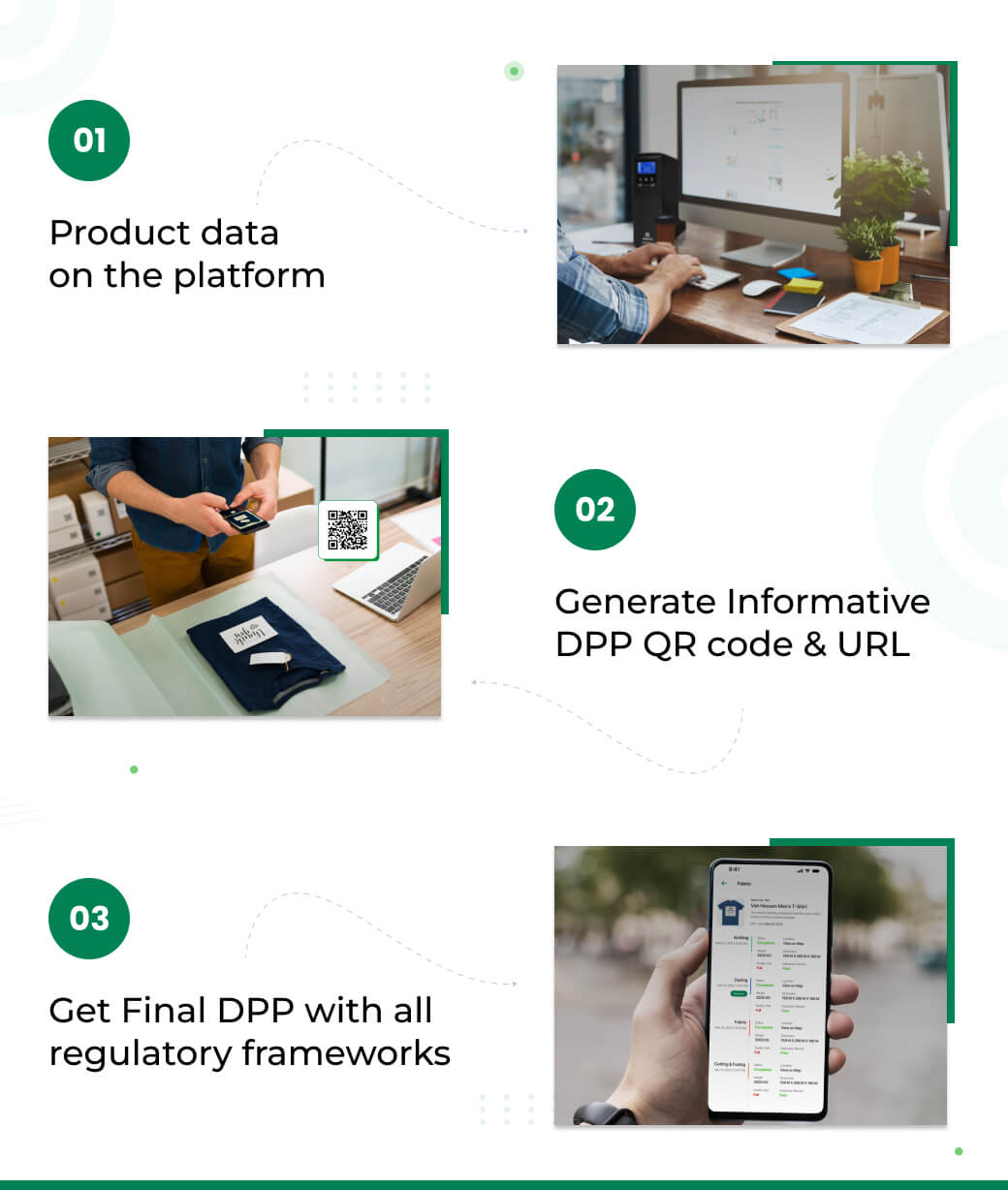
Create a user-friendly interface for stakeholders and customers. Use RFID tags and QR codes on items to provide quick access to the DPP. Create a mobile or cloud application to provide access to the DPP.
9. Inform the parties involved
Teach partners, suppliers and staff how to utilize the DPP and educate consumers on the advantages and applications of the DPP.
The Future of Digital Product Passport?
The circular economy, along with sustainability, quickly rises to the top of the strategic priority list for businesses, brands and even customers. New laws being developed by the digital product passport EU commission or EU Union will pave the way for Digital Product Passports, which are a crucial component of the circular economy.
The Digital Product Passport is quickly becoming a reality for consumers in the construction, food, agricultural, textile and battery industries among others and must be used. The best moment to start testing and investigating the technology is now, so you can take advantage of being the first to market and make sure you have enough time to successfully align the stakeholders' ecosystem with your solution before laws are implemented.
How can Transgenie Help With Digital Product Passports?
Transgenie's cutting-edge DPP Platform gives you total insight into your whole global supply chain. With the support of our platform, you can work seamlessly with contractors and vendors to better understand the environmental impact of your product which enhances overall performance and consistently exceeds your sustainability goals.
To get started with your company's Digital Product Passports, Contact Transgenie today.



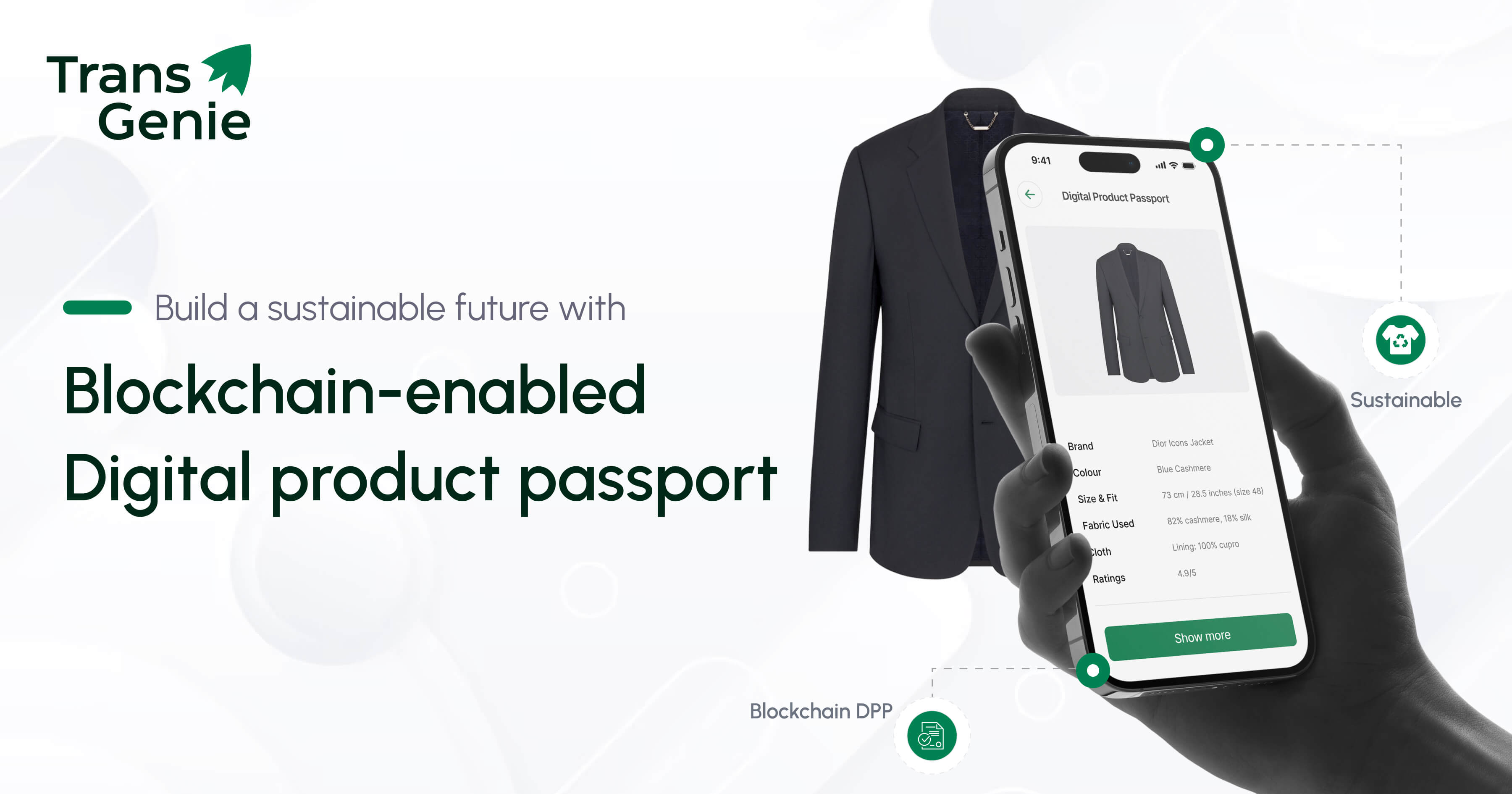

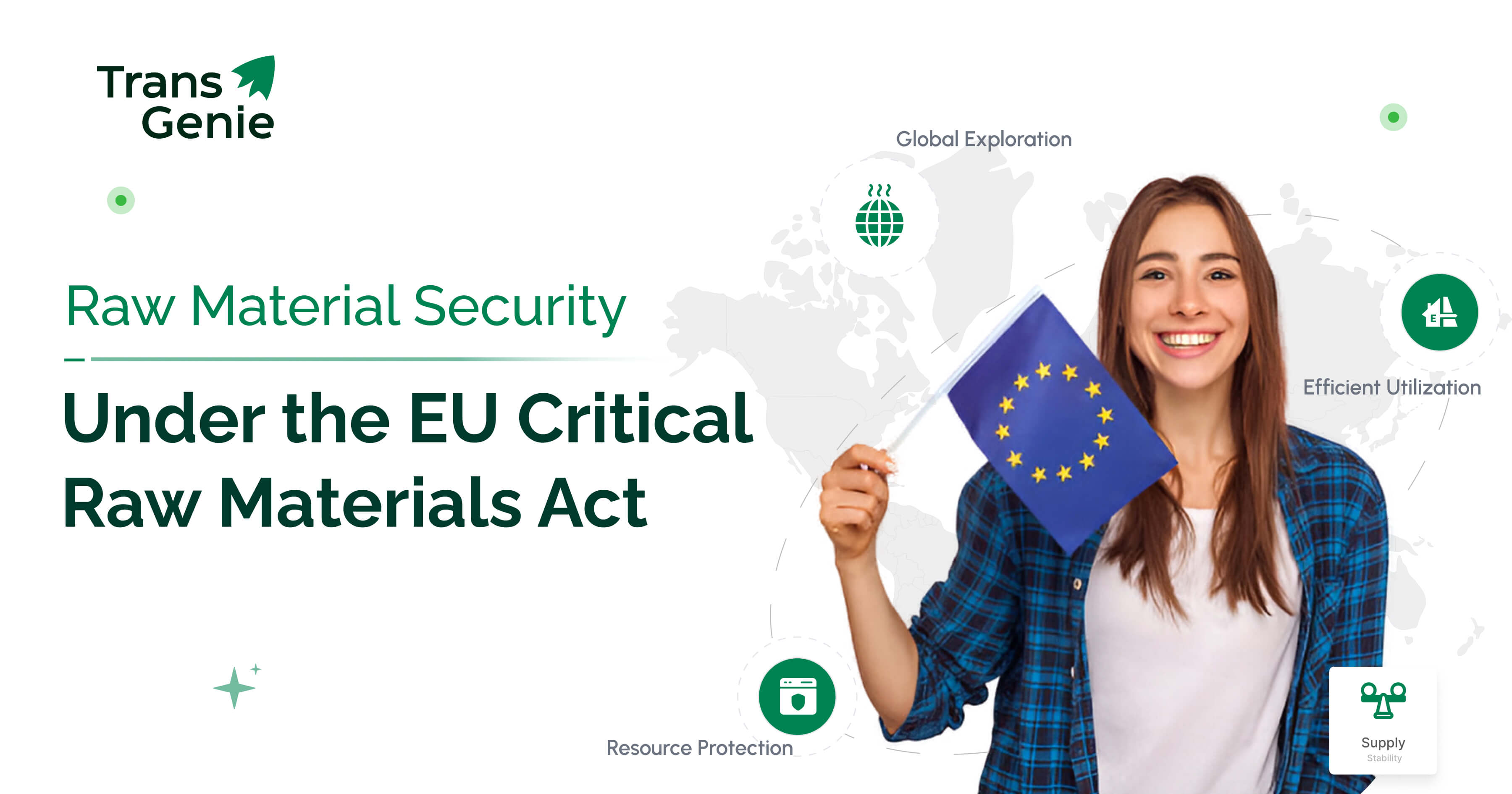
Yokesh Sankar